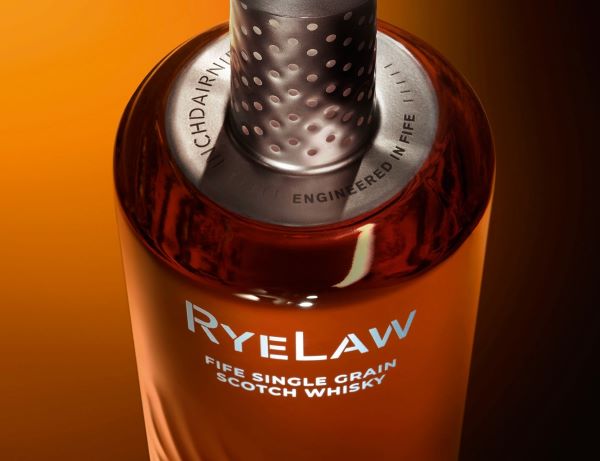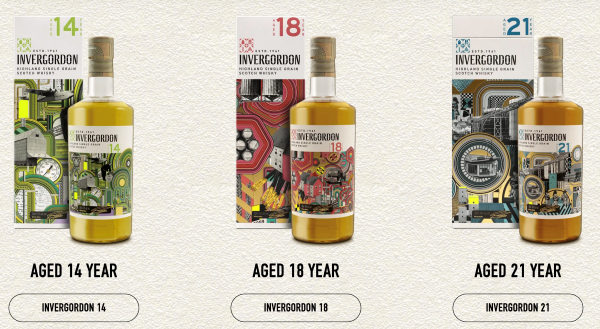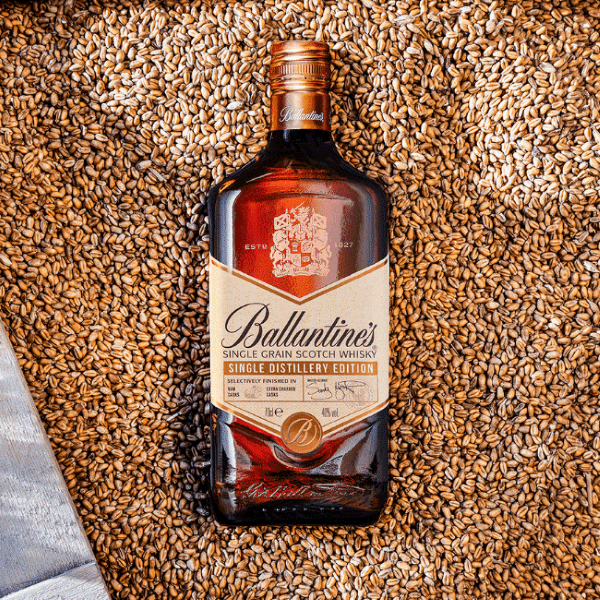Grain of Truth
A generation ago, single malts began to emerge from the shadow of blended Scotch. Today grain whisky is making tentative steps in the same direction. It's very early days, but something seems to be happening, reports Ian Fraser …
Two weeks ago, Chivas Brothers launched Ballantine's Single Distillery – a single grain whisky from its Strathclyde Distillery in Glasgow. It was a first for Ballantine's the world's number two Scotch whisky brand behind Johnnie Walker. It "was created to challenge perceptions of grain whisky and offer a whisky that really showcases the quality of the grain used," said Chivas's master blender, Sandy Hyslop.
Grain is a category with the potential for greatness but Ian Palmer, founder and chairman of Inchdairnie Distillery, believes it can only really fulfil its destiny if the authorities are prepared to reconsider how it is defined.

Palmer, a veteran of the grain whisky scene who started his career at Invergordon Distillers in 1978, believes the current definitions are confusing consumers and holding the category back. He wants to be allowed to describe his RyeLaw whisky as a "single distillery rye," something which is not allowed under the current regime.
Palmer believes the term "grain whisky" has become "a catch-all and the sin bin for the awkward squad". But here he is talking of rye whisky, which is a rather different beast to what Ballantine's has just launched.
Writing in Whisky Magazine in June, editor Bethany Brown said : "Grain whisky is simultaneously desired and derided for the simplicity of its flavours, but when those grains are handled with care and expertise, the outcome can be game-changing." Scotland's eight active grain distilleries produce a combined total of 350m LPA of whisky – marginally more than it's 140 malt distilleries, whose combined output was 340m LPA last year. Historically the vast majority of grain whisky goes into blended Scotches, with well-aged, premium, single-grain whiskies only being sporadically bottled.
The category received a fillip when Compass Box launched Hedonism in 2000. Not long afterwards, the group's founder John Glaser described grain whiskies as "the elegant, almost feminine alter ego to Scotland's malt whiskies". In 2008 Edrington Group brought out Snow Grouse, specifically targeting consumers who are "seeking something new and different". Then in October 2013, William Grant & Sons introduced a range of aged single grain whiskies made at its Girvan distillery in Ayrshire under the Girvan Patent Still brand. A year later Diageo launched Haig Club, a no-age statement single grain whisky, in association with footballer David Beckham – though few of its consumers probably either know or care that it's a grain whisky.

In 2018, Arbikie Distillery introduced Scotland's first rye whiskies in more than 100 years under the Arbikie Highland Rye label. It has since added Arbikie 1794 Highland Rye. Arbikie co-founder and commercial director Iain Stirling attributes the success of this range to the fact "more consumers are willing to experiment, and perhaps also because more female drinkers prefer single grain."
In the last few years, single-grain launches have come thick and fast. Loch Lomond Group, owned by Beijing-based private equity group Hillhouse Capital Management, launched Spearhead single grain in July 2021 – a product the company's innovation head Calum Leslie describes as "one of a kind, championing the single grain, something we know will resonate a lot with people."
Rémy Cointreau-owned Bruichladdich launched a single grain rye under its Regeneration Project in May 2023, which chief executive Douglas Taylor describes as "the start of something much bigger than whisky" owing to its championing of regenerative farming. In April, Paris-based La Martiniquaise launched Label 5 Bourbon Barrel, a single-grain Scotch produced at its Starlaw grain distillery in West Lothian, which Palmer helped set up in 2010.
Meanwhile Marussia Beverages' Mossburn Distillers arm has been quietly experimenting with different grains and production techniques at its Reivers innovation hub in Tweedbank in the Borders. In March 2026, the company expects to move into its new £40m grain distillery, plus restaurant and visitor centre, which is currently under construction on the site of the Jedforest Hotel south of Jedburgh. Mossburn's CEO Neil Mathieson isn't overly concerned about how the category is defined. "We will pilot a branded route. It may be thrown back at us, but we are going ahead with single grain as the type."

Views on the long-term prospects for the grain whisky sector vary. Noble & Company managing director Duncan Mcfadzean doesn't subscribe to the theory that the category is on the cusp of dramatic growth. "Grain whiskies are never going to reach the point where they're large enough to be spoken of in the same breath as single malts. Some of the products are priced quite highly, and getting consumers to experiment at the moment is a tough ask. It's a hard pitch to launch a new category in a declining market."
Exports of bottled single-grain were worth £25.5m last year according to HMRC figures, an increase of 34% on the year before. Yet it remains tiny compared to shipments of bottled blends on £3 billion.
Inchdairnie's Palmer is upbeat however. "Yes, there is more work to do. But I believe grain whisky has a fantastic future ahead of it. It's something that should be talked up, not talked down. If the industry decides to choke off diversification, it's the industry that will suffer in the long run."

Ian Fraser is a financial journalist, a former business editor of Sunday Times Scotland, and author of Shredded: Inside RBS The Bank That Broke Britain.




